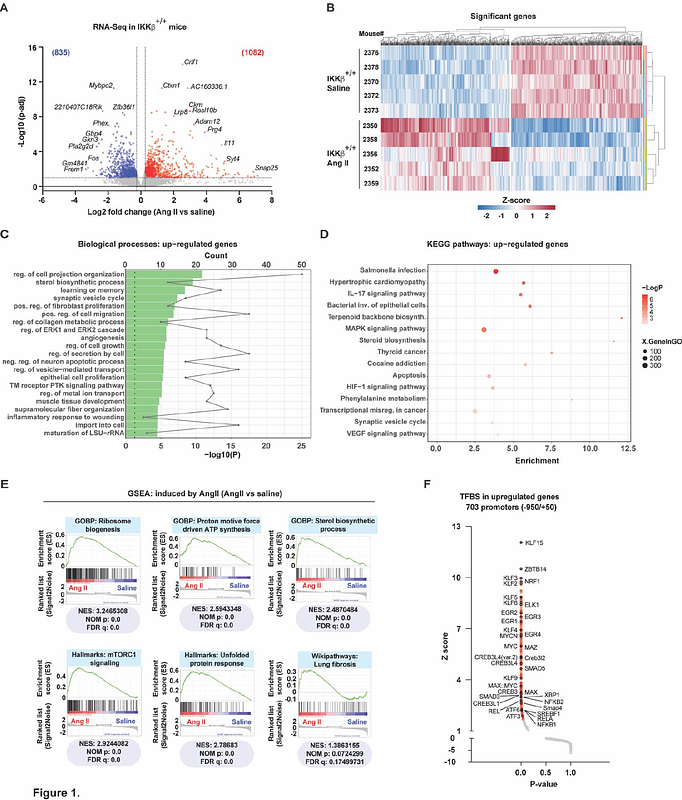Early IKKb-dependent anabolic signature governs vascular smooth muscle cells fate and abdominal aortic aneurysm development

Early IKKb-dependent anabolic signature governs vascular smooth muscle cells fate and abdominal aortic aneurysm development
Doyon, P.; Kizilay Mancini, O.; Do, F.; Huyn, D.; Mayer, G.; Lehoux, S.; ONG, H.; Batardiere, M.; Quoc-Huy, V.; Marleau, S.; Gravel, S.-P.; Servant, M. J.
AbstractObjective: Abdominal aortic aneurysm (AAA) is a detrimental disease with no effective pharmacological therapy. Inflammation is recognized as the key regulator of AAA, however, once the disease is established targeting inflammatory pathways does not impact the outcomes. Understanding the earliest molecular indicators could elucidate precise biological targets and prognostic markers for AAA. Approach and Results: Using apolipoprotein E-deficient mice infused with Angiotensin II (Ang II), we conducted bulk RNA-sequencing (RNA-Seq) analysis on suprarenal (SRA) regions from both unchallenged and challenged WT mice, 24 hours after Ang II infusion to capture the initial phases of aortic stress response. We further created a conditional knock-out model of nuclear factor kappa B kinase subunit beta (IKKb) in vascular smooth muscle cells (VSMC). The development of AAA was evaluated using in situ examination and RT-qPCR, immunohistochemistry, and fluorescence microscopy used for quantification. Cultured VSMC were treated with selective IKKb inhibitor and the expression levels of kruppel like factor 4, b-Catenin and cellular communication network factor 2 were measured by immunoblot analysis. RNA-Seq data support the presence of early anabolic events in SRA regions detailing activation of the mammalian target of rapamycin complex 1 pathway, which paralleled cellular anabolic processes including mitochondria, ribosome, sterol biosynthesis, Unfolded Protein Response (UPR) and fibrogenesis. Conditional deletion of the Ikbkb in VSMC reduces the incidence of SRA lesions and aneurysm ruptures. Furthermore, in situ analysis demonstrated that the protection conferred by the lack of IKKb expression in VSMC is associated with reduced inflammatory response, preserved contractile VSMC phenotypes, and the absence of an anabolic signature. Conclusion: Our results not only reinforce the major roles of VSMC in the rapid adaptation leading to the deleterious remodeling of the vascular wall and aortic lesions but also support a paradigm aiming at repositioning the efforts focusing on anabolic rather than inflammatory events.


